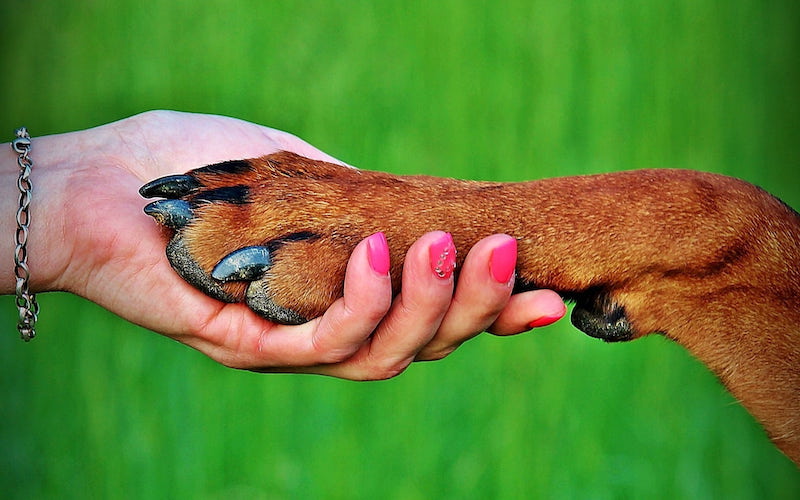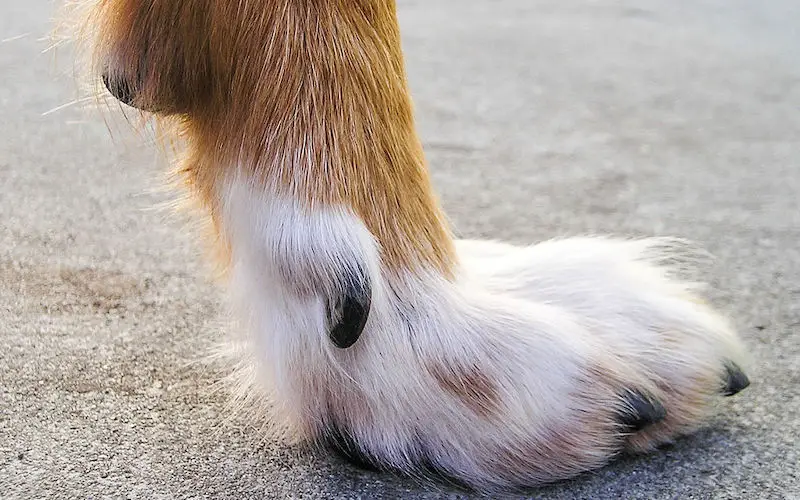patterdaleterriers.co.uk is a participant in the Amazon Services LLC Associates Program and other affiliate advertising programs designed to provide a means for us to earn fees by linking to Amazon.co.uk and affiliated sites. Affiliate links may be used on this page and in patterdaleterriers.co.uk articles, but they do not impact on the price that you pay and they do help me to get this information to you for free. Read my privacy policy for more information regarding affiliates.
Have you ever wondered, what’s that little claw on the inside of my dog’s leg? That’s the dewclaw – the dog equivalent of your thumb or big toe. We use these digits for grasping or walking, but dogs use their dewclaws to grip the ground when running or when trying to hold their favourite toy. Unfortunately a dog dew claw injury can be quite a common ailment in terrier breeds.
Generally, dogs only have dewclaws on their front legs, but sometimes they are found on their hind legs too. If you’ve never noticed your dogs due claws before, take a look.

What is a dog dewclaw injury?
Dewclaws are often only attached to the muscle or skin, and not to the bone like other claws –
particularly with hind dewclaws. Even when connected to bone, they are highly mobile. Therefore despite being tucked away, dogs can occasionally catch this nail leading to a break or more painful, a tear.
Also, just like other nails, dewclaws can become infected, split or even ingrown (if not correctly
trimmed).
How can I tell if my dog has a dewclaw injury?
Now you’re wondering, how do I recognise a damaged dewclaw? Look out for these symptoms and signs:
● Painful gait: your dog is limping and avoiding putting weight on one foot
● Blood in the leg fur or on the dog’s bedding
● Constant licking of the injured paw
● Your dog is reluctant for their paw to be examined/ crying when their leg is touched
● Paw or toe area swollen
● Nail angle abnormal

Dog dew claw injuries – Treatment and Advice
If you suspect a dewclaw injury (or the leg is so painful your dog won’t let you take a look), it’s time to take your dog to the vets. This will prevent further injury and allow the nail to heal or regrow.
You might be tempted to remove a broken nail at home. However, trimming is very tricky to do without cutting the quick – an extremely bloody and painful experience for the dog. So, please leave it to the professionals.
Vets typically remove the nail if it has been torn but still connected. Whereas, if the nail is broken, the vet will trim it back after the dog has been sedated (unless the crack or break is at the tip of a very long nail).
Afterwards, make sure to keep the wound bandaged. Following removal of the bandage, regularly clean the injury, and monitor for signs of infection (swelling, oozing pus discharge, or bleeding). If a tear is particularly bad or the doctor has removed the nail entirely, a course of antibiotics or painkillers may be prescribed.
Prevention of Dog Dew Claw Injuries
Remember the old saying: prevention is better than the cure. It’s easier too!
Make sure to trim the dewclaw regularly. Many owners mistakenly assume that, because the
dewclaw is short, it doesn’t require trimming. But this leads to breaks and tears. So, keep them short, and hopefully, your dog will never need that painful trip to the vets.
If you found this article on dog dew claw injury helpful and are interested in dog health, you might also like to read Patterdale terrier health problems.

